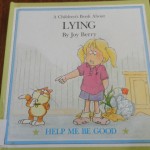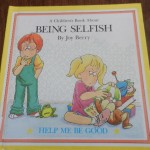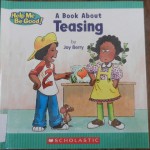Besides the references to manners, virtues and character in our Bible curricula, we use Accountable Kids for a hands-on approach to character building. After all, I am dealing with concrete thinkers. DS and DD are five and three, respectively. They see their morning cards, they go accomplish the task in the picture. When finished with all the cards, they receive a ticket, which they redeem for an activity they enjoy. The same process happens in the afternoon and evening.
Last week, I was glad to find some books at the library which supplement our character training so well, I am thinking about buying them. It’s not as much a financial decision as it is a logistical one. I have been warned by veteran homeschoolers that my house will become engulfed in books. We love books, but we do not want to get suffocated by them. Hence, our great appreciation for the local library.
As a member of several Yahoo Groups, each with a specific theme under the general category of “Homeschooling,” I learn a lot from veteran homeschooling moms. I am so thankful for their generosity. Recently, on one of these groups, I read about a series of books on individual character traits, published by Scholastic and written by Joy Berry. The name sounded familiar and then I remembered she was the author of the potty training kit we bought a few years ago.
I made a mental note of the series and went on with my life, as I was not sure we needed to look into other character curricula as yet.
When I got to the library last week, I saw new books on display in the children’s section. Sure enough, it was the Scholastic series “Help Me Be Good”. Six of them, to be precise. There are a lot more in the series.
My children loved the books. They asked me to read them over and over. We even took two of them to church, for a tactile, concrete reminder about interrupting and being messy. So this last time in church, when they started talking a little louder in their pews, I put the book in their hands and asked, “Remember what we read about?” It worked to settle them down.
It was a good day at the office. Like anything though, this method might grow old and ineffective on them over time. Oh well. I will cross that bridge when I get there…





